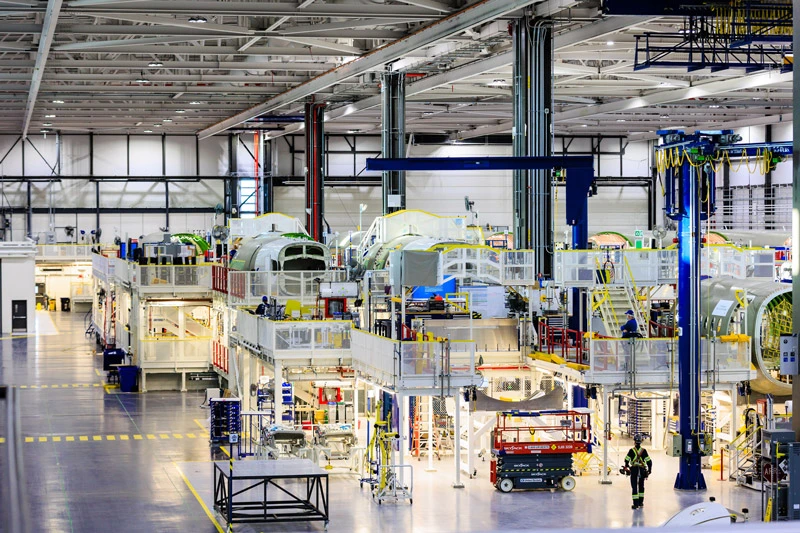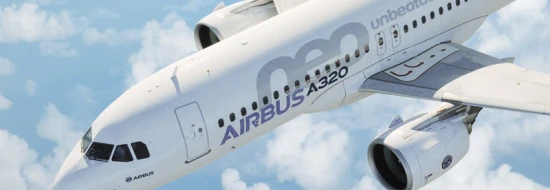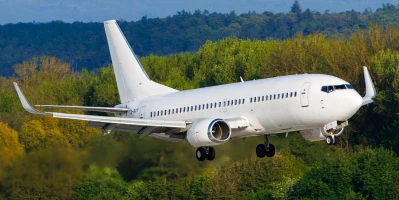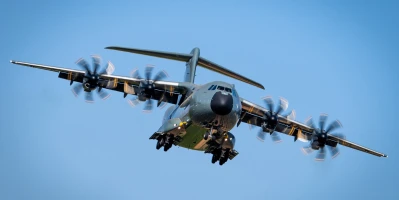good-to-know
Airbus A220 – The innovative medium-haul jet from Canada
When it took over the erstwhile Bombardier C Series, Airbus scored a major coup and was able to round off its range at the lower end. The A220 may soon become even longer.
author: Andreas Spaeth | 4 mins reading time published on: 02.07.2025
author:
Andreas Spaeth
has been traveling the world as a freelance aviation journalist for over 25 years, visiting and writing about airlines and airports. He is frequently invited to appear on radio and TV programs to discuss current events in the sector.
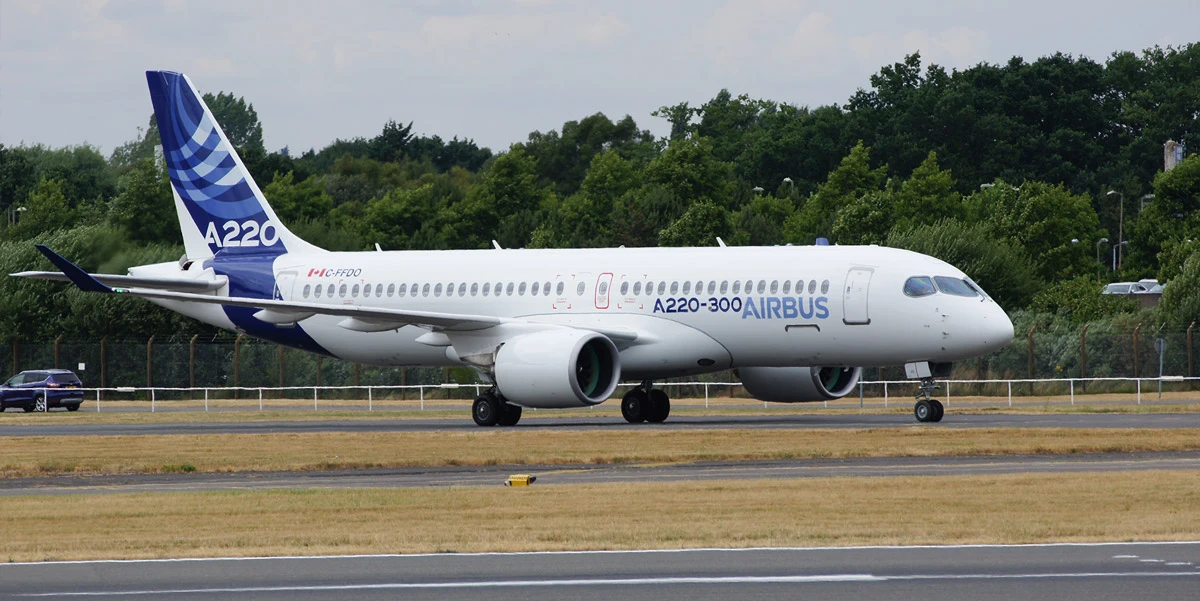
- Boeing 747: Queen of the Skies
- The Boeing 737: How a simple jet revolutionized aviation
- Airbus A400M – modern military transporter and all-around talent
- Airbus A220 – The innovative medium-haul jet from Canada
- Boeing 777X – the largest twin-engine jet in the world
- Airbus A321XLR: A new chapter for aviation
- The Airbus A380 – the world’s largest passenger aircraft
- Airbus A319 – a small aircraft for a wide range of tasks
- Airbus A320 – a medium-haul bestseller for almost 40 years
True innovations in commercial aircraft construction are rare; genuine premieres occur only once a decade, if at all. In the single-aisle segment, the two giants Boeing and Airbus have long since established themselves as the top dogs: Boeing with the introduction of the 737 in 1967, Airbus with the debut of the A320 exactly 20 years later. Instead of developing completely new models, both manufacturers rely on continuously evolving iterations of their proven bestsellers—at Boeing, for almost six decades now. The Bombardier Group from Quebec, on the other hand, dared to make a truly new start. After introducing its successful Canadair Regional Jet (CRJ) family in 1991, for a time the company was the third largest commercial aircraft manufacturer in the world. In 2005, Bombardier presented the C Series, a completely new concept for 120 to 160 passengers. This filled a vulnerable gap in the Airbus and Boeing product portfolios.
However, the Canadians overreached themselves in the development and sale of the innovative twinjets with a 2+3 seating arrangement. For Airbus, the acquisition of the program in 2017 for the token price of 1 Canadian dollar was one of the best deals in the company’s history. It added a state-of-the-art commercial aircraft to its portfolio at almost no cost to itself—and benefited not only from Bombardier’s elaborate preparatory work but also the Canadians’ withdrawal from the market as a competitor. Backed by new synergies and the global sales power of Airbus, the model, now known as the A220, developed into a seriously competitive aircraft. Passengers particularly appreciate its quiet engines and comfortable cabin.
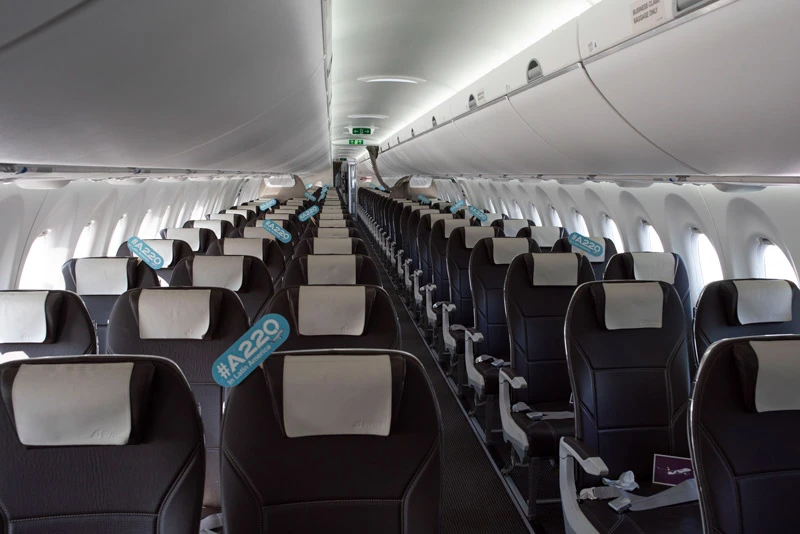

©AIRBUS 2022 – photo by C. SANTANA


©AIRBUS 2022 – photo by C. SANTANA
The innovative twinjets has a 2+3 seating arrangement.
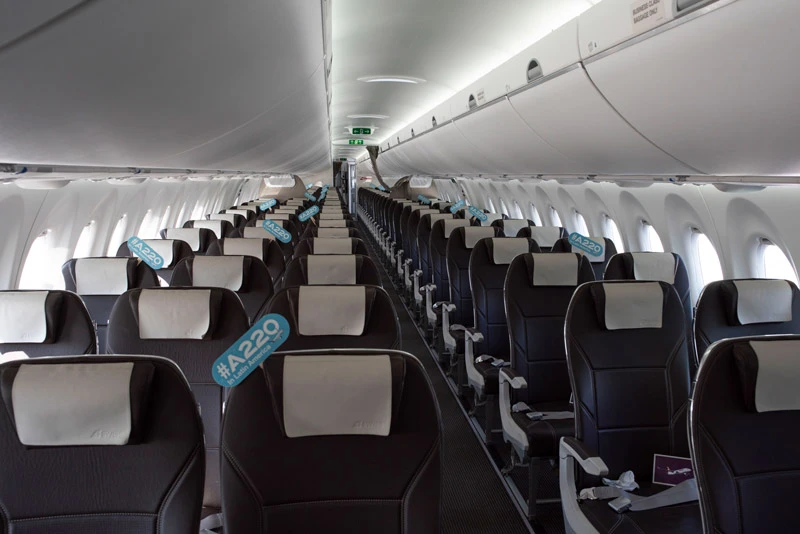
©AIRBUS 2022 – photo by C. SANTANA
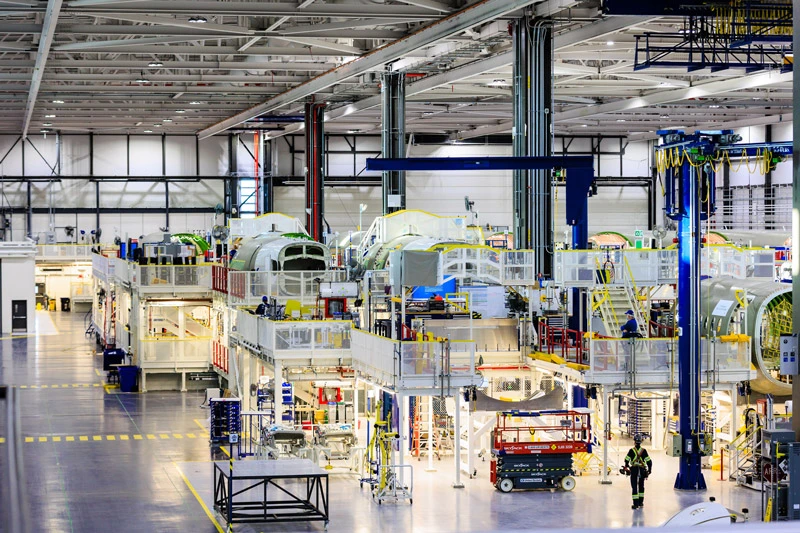
©airbus sas 2022
Airbus A220 – Facts, figures, dates
- The Airbus A220 is manufactured in Mirabel, near Montréal, Canada — a former Bombardier facility that has since been significantly expanded. The site was part of the acquisition agreement between the government of Québec and Airbus. A final assembly line is also located in Mobile, in the U.S. state of Alabama.
- The aircraft comes in two versions: the basic A220-100 (35 meters long, for 100 to 135 passengers) and the stretched A220-300 (38.71 meters long, for 120 to 160 passengers). Wings and engines are identical in both variants.
- Airbus has long considered the possibility of extending the A220 to include a third variant: the A220-500, which would be able to carry up to an estimated 170 passengers. So far, no concrete information has been made available—and many questions, such as the choice of engine, are still unanswered.
- Airbus had sold 904 A220s as of February 2025. By April 2025, 410 of them had been delivered to customers around the world. According to the manufacturer, this is “not yet the hoped-for success.” Only 70 of the shorter, basic model, the A220-100, are in regular service.
- airBaltic is currently the only major airline with a fleet made up exclusively of aircraft from the A220 family. It had placed orders for them back when they were still the Bombardier C Series.
- The A220 is considered an especially efficient aircraft. Its design, GTF engines, and cutting-edge flight control system ensure reduced fuel consumption as well as lower operating and maintenance costs. According to Airbus, two-thirds of the efficiency advantage is due to the GTF engines and the remaining third to the lightweight structure, modern aerodynamics, and flight controls.
Airbus A220
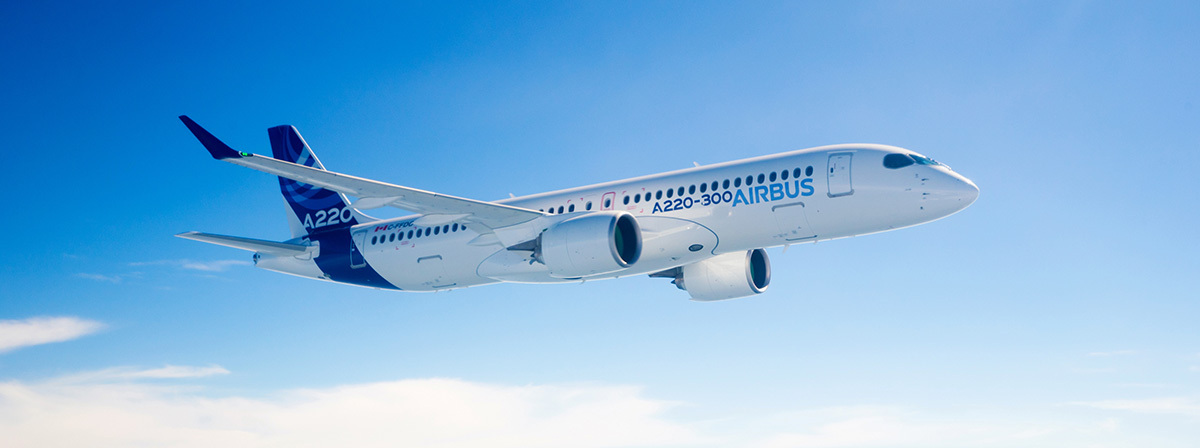
Airbus A220
- Type:
- Twin-engine commercial aircraft
- Manufacturer/origin:
- Bombardier/Airbus Canada – Montréal-Mirabel, Canada
- Maiden flight:
- September 16, 2013
- Entry into service:
- July 15, 2016, at Swiss (CS100)
- Produced:
- 2013–today
- Number built:
- As of April 2025, 410 of 904 orders
- Length:
- 35 meters (A220-100), 38.71 m (A220-300)
- Wingspan:
- 35.10 meters
- Range:
- 6,390 kilometers (A220-100), 6,700 km (A220-300)
- Cruising speed:
- 829–871 km/h
- Seats (max./typical):
- 135/120 (A220-100), 160/150 (A220-300)
You may also be interested in following content
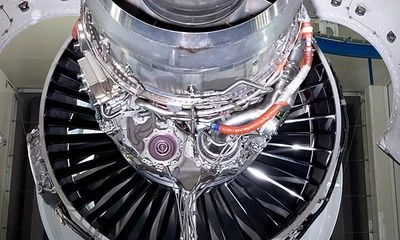
GTF™ Engine Family
The Pratt & Whitney GTF™ engine family powers next-generation commercial aircraft.
The A220 engine: the PW1500G
The PW1500G is a Pratt & Whitney geared turbofan engine that was specially developed for the Airbus A220. Its reduction gearbox located between the fan and low-pressure compressor—on which the low-pressure turbine that drives the fan is mounted—allows the fan to rotate more slowly. At the same time, the low-pressure compressor and turbine can run faster. This helps achieve lower fan pressure ratios, and thus higher bypass ratios, and lets all components achieve their optimum performance. Consequently, the PW1500G has very high overall efficiency, substantially reducing fuel consumption and CO2 emissions and significantly decreasing noise footprint.
MTU has a 15 percent share in the PW1500G program, with responsibility for developing and manufacturing the high-speed low-pressure turbine as well as the first four stages of the high-pressure compressor. MTU is also responsible for the maintenance of the PW1500G via EME Aero in Poland, its joint venture with Lufthansa Technik.
PW1500G

PW1500G
- Type:
- two-shaft turbofan engine
- Thrust (lbs):
- 19 - 25 k
- Bypass ratio:
- 12.5:1
- Fan diameter:
- 6.1 ft
- Program share (MTU):
- 15% - Development and manufacture of various stages of the high-pressure compressor, of the high-speed low-pressure turbine and brush seals in all applications.
Aviation journalist Andreas Spaeth recalls
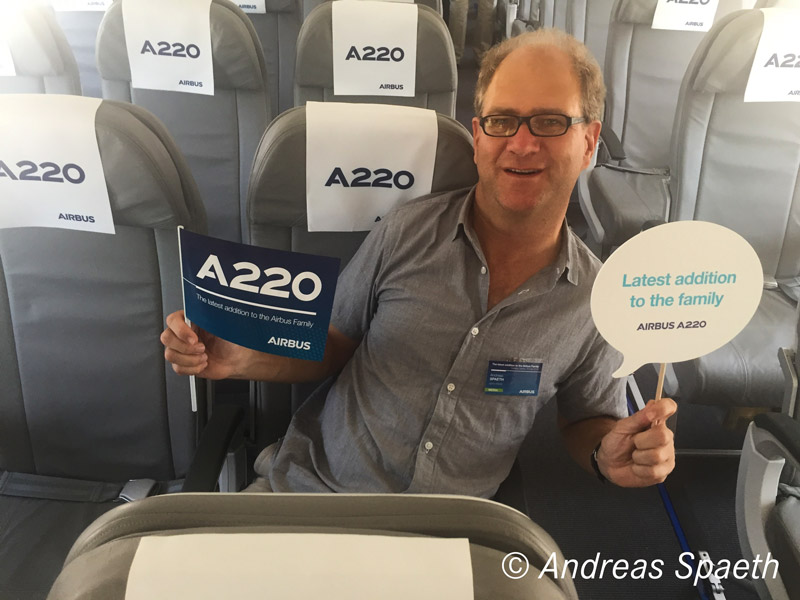
"And then it arrived—doing a few laps and flying some elegant turns so that everyone could see what was emblazoned on the new Airbus livery: the Airbus A220-300."
Aviation journalist
When Airbus took over the C Series, the guessing game began: What would the aircraft now be called? Since the type was already known, the Airbus marketing team thought it would be a good idea to keep everyone on the edge of their seats—after all, the new designation was the last unanswered question. Would it perhaps be the A360? Or the A200?
On June 17, 2018, the media were flown to Toulouse, where the “foundling” was to be presented as the new member of the family. Head of Sales John Leahy had previously referred to the C Series as a “cute little airplane”—an ironic dig at a rival that had now surprisingly fallen into Airbus’s lap.
So we all stood at the edge of the runway on the Airbus site and waited for a sign from the heavens that would reveal the secret. And then it arrived—doing a few laps and flying some elegant turns so that everyone could see what was emblazoned on the new Airbus livery: the Airbus A220-300. The aircraft landed and was greeted with great fanfare next to a stage, as A220 flags were distributed to the onlookers. At that moment, the packaging, the branding, was more important than the content.
The aircraft bore a Canadian registration and Maple Leaf flag as a sign of its origins.



